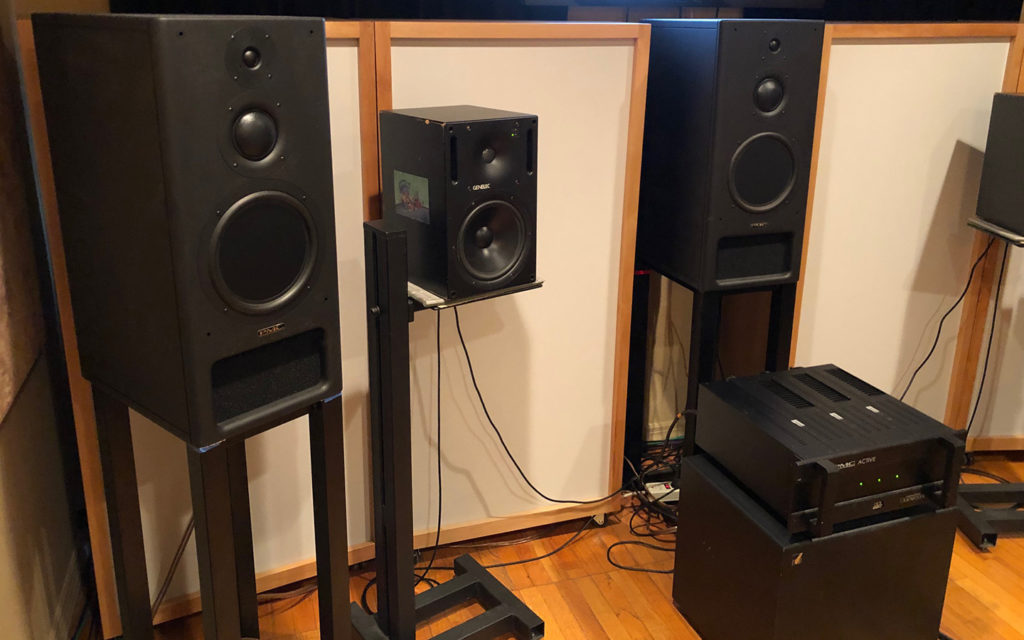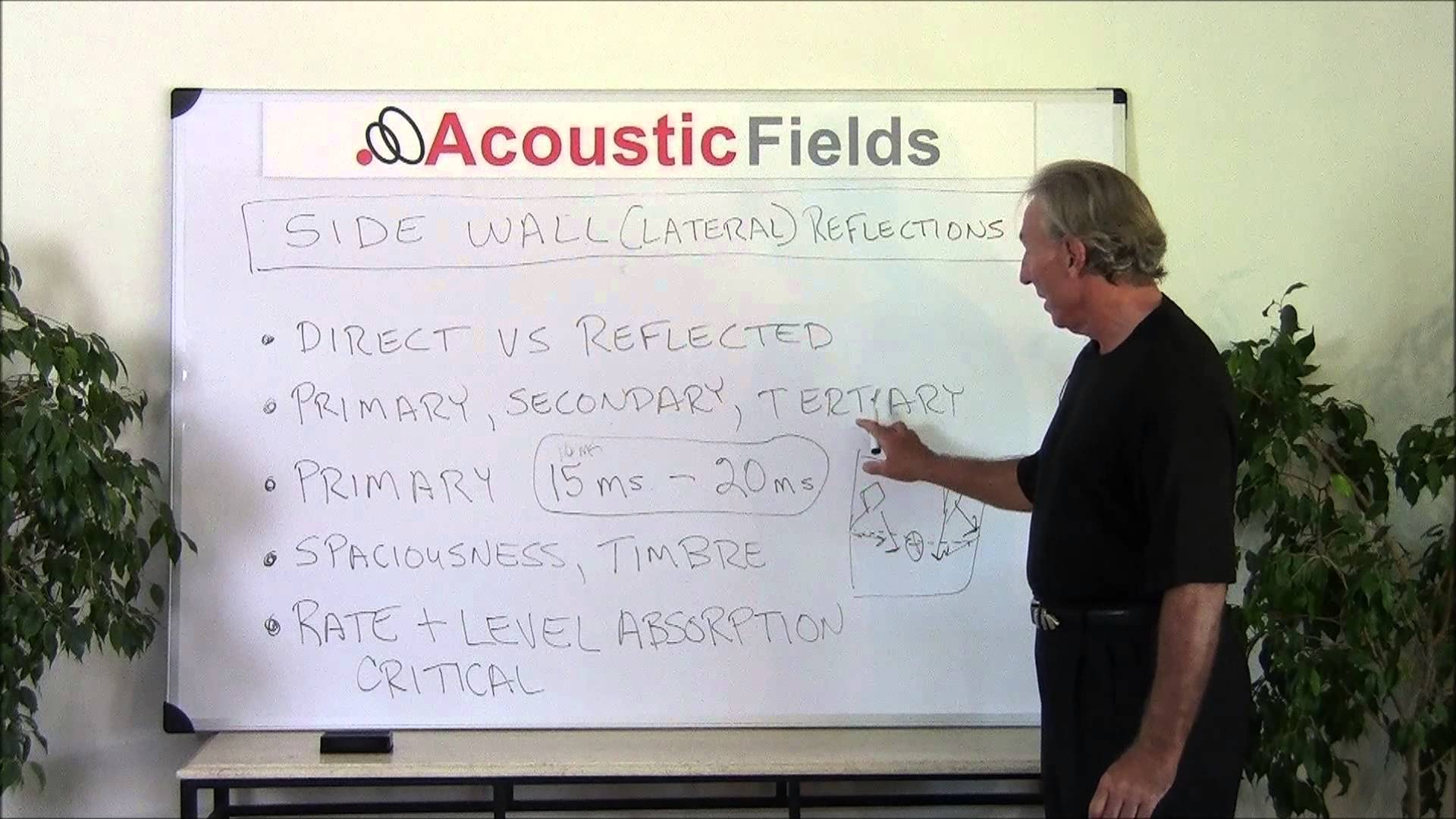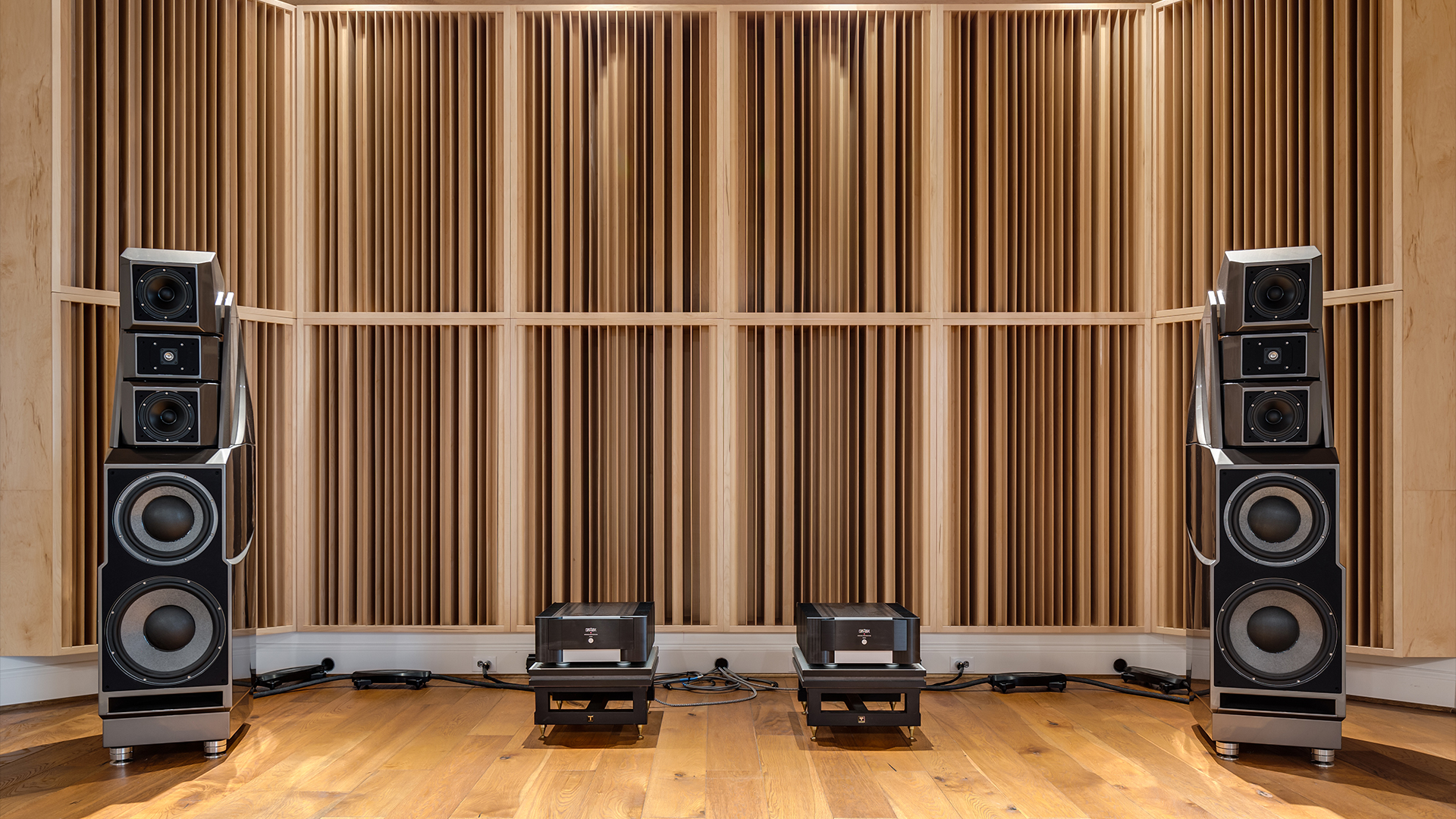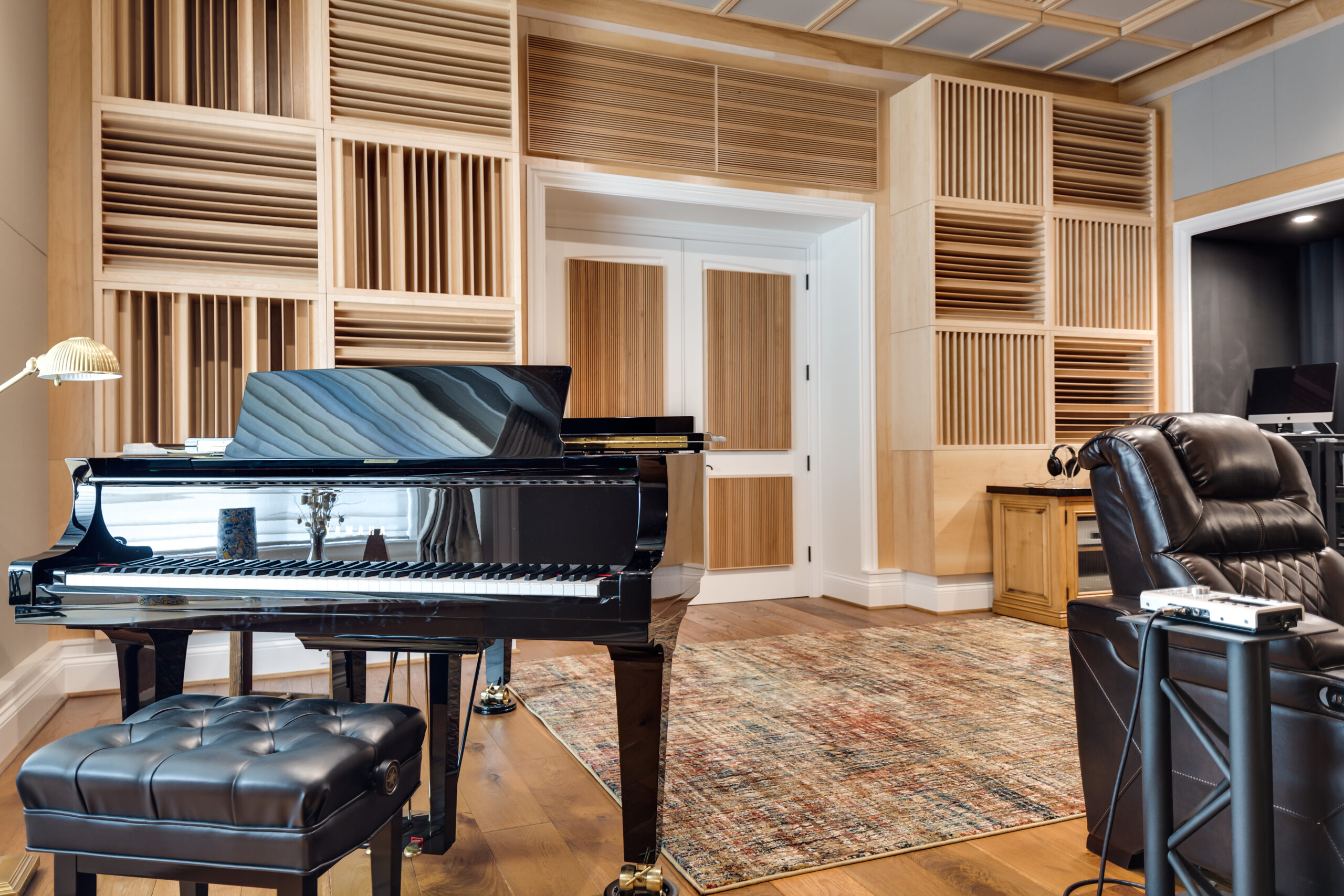Room Acoustics Where To Place Acoustic Panels
Working out where to place acoustic panels in your home theater, listening rooms, or professional recording studio is always an issue. Deciding on which acoustical panel to purchase is enough of an issue, to begin with, now you have to find the correct place. Determining the type of panel, how many you need to use for your room usage, and where to place them must be calculated and predetermined. Science has changed since this blog was originally posted. We have updated this blog to reflect that new data on 11/7/19.
Dealing With Reflections
When you are seated in your listening chair, you are effectively sitting in a box surrounded on all 4 lateral sides by walls. Under your feet is the floor and above your head is the ceiling. When you press play, of these six-room surfaces, which reflection do you hear first at your listening position? You here the floor first which is the closest surface area to your ears. The next surface area to hear is the ceiling. Now, where to place acoustic panels to satisfy the room acoustics?
Floor To Ceiling
The first reflection you hear is from the floor and ceiling. Those two surface areas are physically the closest to you so the reflections from these surfaces will add together with the reflections from the sidewalls. Adding all of this up, you have the wanted direct sound from your loudspeakers and then multiple reflections, one from the floor and one from the ceiling, and four from the walls. All of these reflections have different time signatures that are arriving at your ears at different times. The direct energy from your speakers has one time-domain signature. The reflections from the walls, floor, and ceiling have another. What’s next? We must always be thinking about where to place acoustic panels to satisfy the room acoustics.
Reflections
Next, you have sidewall or lateral as they are called reflections. You have speaker energy that strikes your sidewall, right sidewall to the listener, back to other side wall and repeating this process. As it washes through the room and across the listening field many things occur that are room distortion. The primary reflection is the reflection from the closet room wall. Take the right sidewall and the right channel speaker. That reflection is termed primary. The primary reflection travels across the room and strikes the left sidewall. This is called a secondary reflection. The primary and secondary reflections have different time signatures than the straight -line or no reflections energy. The secondary reflection then travels back to its original wall source or primary. This is called the tertiary or third reflection point. With all of these reflections, we now must ask ourselves where to place acoustic panels to manage the room acoustics.
After this mess, we now add the front and rear wall energy that is looking for a new “home”. The timing sequence looks something like this: direct (wanted) floor, ceiling, side, front and rear walls, all (not wanted). You now have the sonic picture defined. Let’s look at what room surface boundary reflections you have to deal with and in what order of importance they all are to each other. What impact do they all have on what you hear within the room?
Floor And Ceiling Reflections
Floor and ceiling reflections have an impact on the listening position. The ceiling reflection energy is responsible for sound stage height. The existing physical height of the ceiling can be “acoustically exceeded” through the proper use and application of diffusion. It does vary with room acoustic use. A listening room works best with a combination of absorption and diffusion technologies. A control room may prefer more of an absorptive approach so that a more critical listening sound stage can be realized. All room surfaces contribute to your sound stage. We have a different question to ask with each usage. Each usage we have to ask where to place acoustic panels to satisfy that room acoustics for that usage.
Sound Stage
A sound stage is literally that, namely a “stage of sound” that a two-channel system is capable of achieving in an acoustically treated room. It is that space between your left and right channel speakers, but it is also that space that extends wider and even taller than your loudspeakers themselves if the room is acoustically treated correctly. We must strike a balance between the straight-line energy from the speakers which strike your ears first and the reflections from the sidewalls, floor, and ceiling. If we get the balance correct, we have a sonic presentation in front of us that exceeds the physical space the speakers are in. There is more presentation width, height, and depth. There are more detail and definition along with more space between the instruments and voices. This is room acoustics at its best. Identifying surface area issues and then finding out where to place acoustic panels.
Three Dimensions of Sound
Three dimensions of sound space can be created between your speakers. You can have a height, width, and yes, even depth in your sound stage. The speakers themselves give you the energy to start with, but you must take that energy and then the room energy and make them both work together. They must get along because they must live in the same house together. The first surface area to treat is the floor and ceiling. The floor usually has a carpet but the ceiling is bare. Let’s assume carpet on the floor, now we need to provide absorption or diffusion for the ceiling. Which treatment one uses depends on room usage and how far away the ceiling is. For two-channel audio, you can choose absorption or diffusion for the ceiling and absorption for the sidewalls. For theater, you can choose diffusion for the ceiling and rear wall and absorption for the front and sidewalls. For a mix room, you want absorption on the front and sidewalls with diffusion on the rear wall.
Side Wall Reflections
Sidewall reflections must be slowed down. They are simply moving way too fast. When they cut across the straight line or direct sound from our loudspeakers and produce primary, secondary, and tertiary reflections, we must manage them through absorption. We want to slow their time signature down below that of the straight-line energy from our speakers. We want to reduce their amplitude or strength through absorption but we must be careful. We must use the correct rate and level of absorption that works for music and voice. Not all acoustical products have the correct rate and level of absorption for music and voice. Their rates and levels of absorption are more suited for noise than music and voice. Music and voice are special. Our studio pro-open-celled foam was created for music and voice:
https://www.acousticfields.com/product/acoustic-foam/
https://www.acousticfields.com/product/acoustic-panels/
- Diaphragmatic Absorption Behind Monitors
- Quadratic Diffusion on Rear Wall
Side Wall – Absorption
Sidewall reflections are best managed through absorption. It cannot be just any type. The proper absorption treatment must be selected that can absorb side wall reflections at the correct rate and level. Both the rate and level of absorption must be considered when dealing with sidewall reflections. It is not necessary to absorb 100% of all side wall reflected energy. You must choose how much and at what frequency you want the reflections to intermix with the direct sound. There is no need to destroy the reflected energy by changing all of it to heat. Just some of the more unfriendly parts. This is the cause behind a too-dead room sound. It is too much surface coverage with the wrong rate and level of absorption.
Front And Rear Walls
Rear and front walls contribute to the depth and yes, even the length of our sound stage. This is only accomplished however, by treating each front wall and rear wall surface with diffusion. Quadratic diffusion will give you consistent and predictable performance. You need to use different frequency diffusion ranges depending on the front or rear wall, but it can be done and done very well. We use absorption on the sidewalls with the proper rate and level for music and voice, then we take that defined and clarified sound and then spread it out into the room using diffusion. Diffusion is like absorption. You must select the proper rate and level of diffusion to match the chosen rate and level of absorption.
Low-Frequency Absorption
The low-frequencies within your room need to be addressed first even before the reflections. Fundamental low-frequencies below 100 Hz. are the parents of our middle-range frequencies. A 100 Hz. wave is a 200 Hz. ray. A 30 Hz. fundamental is a 60 Hz., 90 Hz. 120Hz. and 150 Hz. ray of energy. You must lower the strength of the fundamental low frequencies and thus lower the strength of the middle and higher frequencies so we can better manage through the proper rates and levels of absorption. Low-frequency energy smothers and blurs everything in our middle and high-frequency ranges. It must be treated before reflections.
The most powerful treatment type is diaphragmatic absorption. It has the highest rates and levels of absorption per square foot of any of the other types which are Helmholtz and membrane. You must have high rates and levels of absorption to manage energy below 100 Hz. You must cover large surface areas on the walls with low-frequency management technology. Where you place the diaphragmatic absorption depends on many variables. It depends on your room size and volume. How much energy you place within your room (usage) and any noise issues you may also have.

Diaphragmatic Absorbers on Front Wall
Diaphragmatic Absorbers: https://www.acousticfields.com/product-category/sound-absorption/acda-series/
In Summary
I hope this explanation helped further your understanding of this important room acoustic issue. Please leave any comments below so I can get back to you. Don’t be afraid to hit those Facebook like, Google+ and Twitter buttons on the left hand side so other people can see this post. And if you want to learn more about this subject please sign up for my free room acoustic treatment videos and ebook which provide step by step instructions. Get instant access by signing up here.
Thanks
Dennis











I’m building a ported sub cabinet and I was wondering how many sides should i place acoustic panels on, 3 I hope…back, side, and top 1.5 in thick egg-crate. 15″ sub 3.0 cu.ft.
J, None of the described technologies are low-frequency absorbers. There are 3 type, Helmholtz, membrane, and diaphragmatic.
Hello Dennis,
Does it make any difference if I mount my 2’x4’x2” panels off the wall 3” to get the absorption from both sides?
P, It depends on the panel type, absorption coefficient, and position in relation to a source. Remember that middle and high-frequency absorption works by air flow across a surface. If the panel is absorptive on both sides, then allowing for more airflow will increase the surface area absorption rates. This may or may not be desirable.